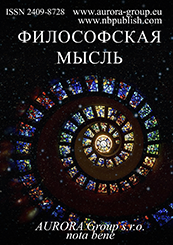Social philosophy
Reference:
Ismailov N.O.
The relationship of human rights and freedoms in the context of justice
// Philosophical Thought.
2024. № 4.
P. 1-9.
DOI: 10.25136/2409-8728.2024.4.70373 EDN: EHCJUM URL: https://en.nbpublish.com/library_read_article.php?id=70373
 This work is licensed under a Creative Commons Attribution-NonCommercial 4.0 International License.
This work is licensed under a Creative Commons Attribution-NonCommercial 4.0 International License.|
Read the article
Peer Review: |
EDN: EHCJUM |

 Eng
Eng












 © 1998 – 2024 Nota Bene. Publishing Technologies. NB-Media Ltd.
© 1998 – 2024 Nota Bene. Publishing Technologies. NB-Media Ltd.




